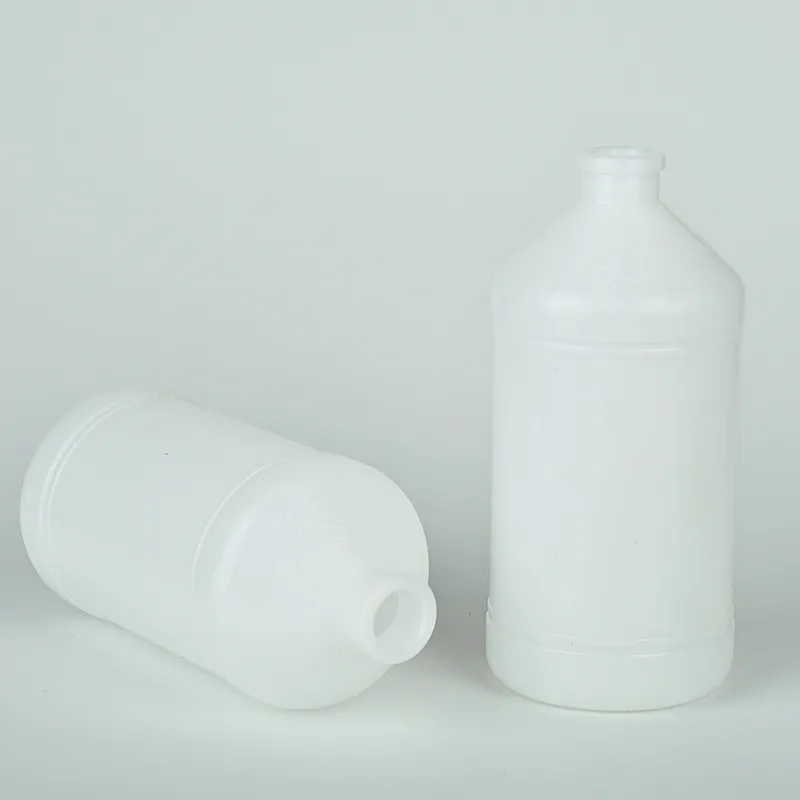
-
 Afrikaans
Afrikaans -
 Albanian
Albanian -
 Amharic
Amharic -
 Arabic
Arabic -
 Armenian
Armenian -
 Azerbaijani
Azerbaijani -
 Basque
Basque -
 Belarusian
Belarusian -
 Bengali
Bengali -
 Bosnian
Bosnian -
 Bulgarian
Bulgarian -
 Catalan
Catalan -
 Cebuano
Cebuano -
 Corsican
Corsican -
 Croatian
Croatian -
 Czech
Czech -
 Danish
Danish -
 Dutch
Dutch -
 English
English -
 Esperanto
Esperanto -
 Estonian
Estonian -
 Finnish
Finnish -
 French
French -
 Frisian
Frisian -
 Galician
Galician -
 Georgian
Georgian -
 German
German -
 Greek
Greek -
 Gujarati
Gujarati -
 Haitian Creole
Haitian Creole -
 hausa
hausa -
 hawaiian
hawaiian -
 Hebrew
Hebrew -
 Hindi
Hindi -
 Miao
Miao -
 Hungarian
Hungarian -
 Icelandic
Icelandic -
 igbo
igbo -
 Indonesian
Indonesian -
 irish
irish -
 Italian
Italian -
 Japanese
Japanese -
 Javanese
Javanese -
 Kannada
Kannada -
 kazakh
kazakh -
 Khmer
Khmer -
 Rwandese
Rwandese -
 Korean
Korean -
 Kurdish
Kurdish -
 Kyrgyz
Kyrgyz -
 Lao
Lao -
 Latin
Latin -
 Latvian
Latvian -
 Lithuanian
Lithuanian -
 Luxembourgish
Luxembourgish -
 Macedonian
Macedonian -
 Malgashi
Malgashi -
 Malay
Malay -
 Malayalam
Malayalam -
 Maltese
Maltese -
 Maori
Maori -
 Marathi
Marathi -
 Mongolian
Mongolian -
 Myanmar
Myanmar -
 Nepali
Nepali -
 Norwegian
Norwegian -
 Norwegian
Norwegian -
 Occitan
Occitan -
 Pashto
Pashto -
 Persian
Persian -
 Polish
Polish -
 Portuguese
Portuguese -
 Punjabi
Punjabi -
 Romanian
Romanian -
 Russian
Russian -
 Samoan
Samoan -
 Scottish Gaelic
Scottish Gaelic -
 Serbian
Serbian -
 Sesotho
Sesotho -
 Shona
Shona -
 Sindhi
Sindhi -
 Sinhala
Sinhala -
 Slovak
Slovak -
 Slovenian
Slovenian -
 Somali
Somali -
 Spanish
Spanish -
 Sundanese
Sundanese -
 Swahili
Swahili -
 Swedish
Swedish -
 Tagalog
Tagalog -
 Tajik
Tajik -
 Tamil
Tamil -
 Tatar
Tatar -
 Telugu
Telugu -
 Thai
Thai -
 Turkish
Turkish -
 Turkmen
Turkmen -
 Ukrainian
Ukrainian -
 Urdu
Urdu -
 Uighur
Uighur -
 Uzbek
Uzbek -
 Vietnamese
Vietnamese -
 Welsh
Welsh -
 Bantu
Bantu -
 Yiddish
Yiddish -
 Yoruba
Yoruba -
 Zulu
Zulu
Petri Dish Laboratory Apparatus Uses – Essential Lab Equipment for Microbiology Research
- Introduction to Petri Dish Laboratory Apparatus Uses
- Historical Evolution and Key Technological Advantages
- Comparison of Leading Petri Dish Manufacturers
- Custom Solutions in Laboratory Apparatus Design
- Applications Across Scientific Fields
- Case Studies: Petri Dish Success Stories
- Conclusion: Maximizing Value with Petri Dish Laboratory Apparatus Uses

(petri dish laboratory apparatus uses)
Introduction to Petri Dish Laboratory Apparatus Uses
The petri dish laboratory apparatus uses
have revolutionized research, diagnostics, and industrial applications across the globe. Originally designed as a simple, shallow cylindrical lidded plate, the petri dish has become a cornerstone in the fields of microbiology, cell culture, and beyond. Owing to its versatility and role in promoting pathogen identification, drug testing, and quality control, the uses of petri dish in laboratory apparatus settings represent a foundational element of modern science.
Laboratories and research institutions report that over 85% of microbial analysis and culturing depend on the effective application of petri dishes. Their efficiency enables high-throughput screening, precise sample isolation, and controlled experimental reproducibility. Understanding petri dish apparatus uses is key to optimizing laboratory workflows and achieving reliable, repeatable results.
Historical Evolution and Key Technological Advantages
Since its invention by Julius Richard Petri in 1887, the petri dish has undergone remarkable transformation. Initially fabricated from glass for sterility and reusability, modern petri dishes exploit advanced material sciences, offering options in polystyrene, polypropylene, and specialty plastics. Today's petri dish laboratory apparatus uses benefit from technological enhancements such as:
- Pre-sterilized, single-use formats reducing contamination risk
- Vented and divided models for increased experimental flexibility
- Optically clear bases supporting enhanced microscopy compatibility
- Graduated surfaces for quantitative colony measurement
Technological leaps have driven down per-unit manufacturing costs while raising the quality and reproducibility demanded in pharmaceutical and clinical settings. Innovations in surface treatments now allow for improved cell attachment, tailored for tissue engineering and cell-based assays in regenerative medicine. The future of petri dish apparatus uses likely points toward further customization for niche applications.
Comparison of Leading Petri Dish Manufacturers
Choosing reliable petri dish laboratory apparatus for specific research or production environments often involves comparing offerings from leading manufacturers. Critical parameters include material composition, clarity, sterility assurance, environmental sustainability, and cost per unit.
| Manufacturer | Material | Sterility | Optical Quality (nm) | Disposable/Reusable | Eco-Certification | Unit Cost (USD) |
|---|---|---|---|---|---|---|
| Corning | Polystyrene | Pre-sterilized | 90 | Disposable | ISO 14001 | 0.06 |
| Greiner Bio-One | Polystyrene | Gamma irradiated | 85 | Disposable | FSC-certified packaging | 0.07 |
| ThermoFisher | Polystyrene | Electron beam | 92 | Disposable | REACH compliant | 0.08 |
| Pyrex | Borosilicate Glass | Autoclavable | 99 | Reusable | Glass recycling program | 2.40 |
This comparative data highlights trade-offs between cost efficiency, sterility, eco-credentials, and laboratory requirements. For research where optical precision is paramount, glass petri dishes from Pyrex remain a premium option. In contrast, Corning and Greiner Bio-One excel in disposable, high-volume deployment suited for routine diagnostics and industrial-scale cultures.
Custom Solutions in Laboratory Apparatus Design
Standard petri dishes serve a wide array of laboratory procedures, yet the expanding horizon of experimental science demands more specialized formats. Manufacturers now offer customized solutions, adjusting dimensions, compartmentalization, and surface coatings to optimize outcomes for unique workflows.
- Multi-Chamber Designs: With up to 6 isolated wells, supporting concurrent culture of disparate samples and saving bench space.
- Gas-Permeable Lids: For controlled atmospheric gas exchange-cultures, crucial in advanced cell biology and virology.
- Hydrophilic/Hydrophobic Surface Treatments: Custom surface energies enhance or repel sample adhesion, aiding in stem-cell cultivation or inhibition assays.
- Barcoding & Automated QC: Enabling high-throughput traceability and immediate digital data logging.
According to a 2022 survey of R&D laboratories, more than 35% expressed interest in petri dish variants specifically tailored for automated robotic plate handling and image-based colony counting. These customizations not only boost productivity but also improve reproducibility and regulatory compliance for clinical diagnostics and pharma workflows.
Applications Across Scientific Fields
The uses of petri dish in laboratory apparatus have expanded far beyond classical bacteriological research. Today, their applications encompass:
- Antimicrobial Susceptibility Testing: Standardized agar diffusion assays for public health labs worldwide
- Environmental Monitoring: Air and water sampling for industrial hygiene and pollution studies
- Food Safety: Detection of pathogens like Salmonella, Listeria, and E. coli in food processing pipelines
- Stem Cell Research: Adherent culture of undifferentiated and differentiated cell types
- Plant Biotechnology: In vitro propagation and genetic transformation of crop specimens
- Mycology & Fungal Diagnostics: Culturing environmental and clinical fungal isolates
Notably, the implementation of rapid screening methodologies integrated with digital imaging has reduced time-to-result by 35%, underscoring the critical role of high-quality petri dish apparatus uses in accelerated research and patient care.
Case Studies: Petri Dish Success Stories
Real-world deployment of petri dish laboratory apparatus offers compelling evidence of its impact on scientific advances, public health, and industry innovation. A selection of illustrative case studies draws out the strategic value and performance benchmarks that guide decision-makers and researchers.
- COVID-19 Variant Tracking (2020–2022): The World Health Organization reports over 200 million SARS-CoV-2 isolates processed using high-throughput disposable petri dishes. Automation-friendly designs enabled rapid phenotyping and genomic surveillance.
- Antibiotic Discovery Program (US Biotech, 2021): Custom 4-well petri dishes from ThermoFisher facilitated parallel screening of over 8,000 environmental isolates per week, accelerating candidate selection for next-generation antibacterials.
- Water Safety Initiative (EU, 2019): Greiner Bio-One’s pre-barcoded dishes cut human error rates by 55% in continuous river pollution monitoring, improving data integrity for regulatory reporting.
- Regenerative Medicine (Asia-Pacific, 2023): Labs deploying hydrophilic-coated dishes reported 27% growth rate improvement in induced pluripotent stem cells (iPSC) compared to standard polystyrene, streamlining cell banking for therapeutic applications.
These diverse examples showcase the flexibility and mission-critical reliability underpinning petri dish apparatus uses in today's scientific landscape.
Conclusion: Maximizing Value with Petri Dish Laboratory Apparatus Uses
In summary, the continual evolution of petri dish laboratory apparatus uses reflects both a legacy of scientific innovation and a forward-looking platform for modern research challenges. From cost-effective disposables driving global diagnostics to high-precision glass formats enabling the most demanding cell biology, the uses of petri dish in laboratory apparatus remain foundational.
Rigorous manufacturer comparisons, adoption of custom designs, and application-specific choices all contribute to laboratory efficiency, data quality, and scientific discovery. As the demands of research and industry continue to shift, the adaptability, quality, and performance of petri dish apparatus uses will remain at the forefront of scientific progress.

(petri dish laboratory apparatus uses)
FAQS on petri dish laboratory apparatus uses
Q: What are the main uses of a petri dish in laboratory apparatus?
A: Petri dishes are primarily used to culture microorganisms such as bacteria and fungi. They provide a sterile environment for growing and observing colonies. Their transparent material allows easy examination under microscopes.Q: How is a petri dish apparatus utilized in scientific experiments?
A: Scientists use petri dishes to hold agar and other growth media for cells and microbes. The apparatus helps in isolating and identifying different species. They are essential for studying microbial growth patterns.Q: Why are petri dishes important among laboratory apparatus uses?
A: Petri dishes are vital for microbiological studies and experiments. They facilitate the safe handling and observation of samples. Their design ensures a flat, stable surface that promotes even growth.Q: Can petri dish laboratory apparatus be used for purposes other than culturing microorganisms?
A: Yes, petri dishes can also be used for seed germination, chemical reactions, and as containers for small specimens. Their versatility makes them useful in botany and chemistry labs as well. However, their primary use remains in microbiology.Q: What makes the petri dish suitable for laboratory uses?
A: Petri dishes are made from transparent glass or plastic, allowing clear visibility of contents. Their shallow, circular shape maximizes surface area for growing organisms. This design ensures convenience in application and analysis.-
Little Dropper Bottles Wholesale – Leak-Proof, Precise Dispensing Little Plastic Vials & Dropper Tip Bottles for Versatile UseNewsJul.08,2025
-
What is a Culture Plate? Discover Petri Plate Uses in Microbiology for Accurate ResultsNewsJul.08,2025
-
Premium Medical Lab Consumables Supplier Comprehensive Lab Consumables ListNewsJul.07,2025
-
Wholesale Pipette Bottles - 30ml Dropper Bottles with Pipette & Small Pipette Bottles SupplierNewsJul.07,2025
-
Glide Homeo Bottles Wholesale Black Plastic Spray Bottles Supplier Bulk Mist Bottles for HomeopathyNewsJul.06,2025






















